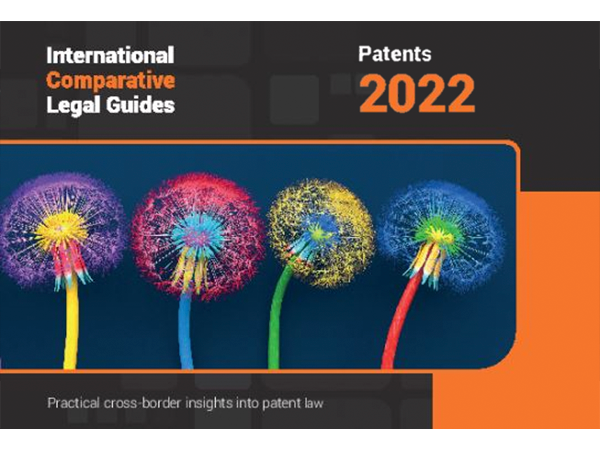
Intellectual Property
Viewpoints
Filter by:
District Court Rules Against Amgen's Motion for Preliminary Injunction to Prevent Marketing of Sandoz's Biosimilar Zarxio
March 20, 2015 | Blog | By Thomas Wintner, Terri Shieh-Newton
In an order released on March 19, 2015, U.S. District Court Judge Richard Seeborg of the Northern District of California denied Amgen’s motion for judgment on the pleadings as well as its request for a preliminary injunction to prevent Sandoz from marketing its drug Zarxio®.
Read more
Understanding Post-AIA Power of Attorney Procedures
March 19, 2015 | Blog | By Christina Sperry, Colleen Witherell
Applicants identified upon a U.S. patent application’s filing can impact the ownership rights to the patent application throughout prosecution. Prior to implementation of relevant aspects of the America Invents Act (AIA) on September 16, 2012, patent application Applicants could only be Inventors.
Read more
U.S. International Trade Commission Institutes Investigation Under 100-Day Pilot Program Examining Complainant's Standing to File Suit
March 19, 2015 | Blog
The U.S.I.T.C. instituted its first investigation under its 100-day pilot program for early determination of a specific potentially case-dispositive issue.
Read more
Court Denies Generic Drug Manufacturer's Motion to Dismiss Hatch-Waxman Patent Infringement Action on Jurisdiction Grounds
March 18, 2015 | Blog | By Peter Cuomo, Joe Rutkowski
On March 12, the United States District Court for the Southern District of Indiana joined the District of Delaware and Eastern District of Texas as the first courts to consider a generic drug manufacturer’s motion to dismiss a Hatch-Waxman patent infringement action for an alleged lack of personal jurisdiction following the Supreme Court’s decision in Daimler AG v. Bauman, 134 S.Ct. 746 (2014).
Read more
Second Bites At the Post-Grant Apple?
March 13, 2015 | Blog | By Howard Wisnia
The America Invents Act (AIA) gives the Board broad discretion in deciding whether or not to institute an IPR or CBM when the Petition addresses substantially the same prior art or arguments to those previously considered by the PTO.
Read more
A "Solution" In Search of a Problem?
March 13, 2015 | Blog | By Michael Renaud, Peter Snell, Robert Moore
The Innovation Act introduced in the House on February 5, 2015 is designed to curb patent abuse, but as currently drafted it doesn't address the worst forms of the problem.
Read more
Application Drafting Dangers Highlighted by Pacing Technologies v. Garmin International
March 6, 2015 | Blog | By Christina Sperry
The general rule is that a patent claim’s preamble does not limit the claim unless the preamble breathes life and meaning into the claim. The Federal Circuit’s recent decision in Pacing Techs. v. Garmin Int’l, No. 2014-1396 (Feb. 18, 2015) highlights some application drafting choices that, under post-issuance scrutiny, resulted in limitations being read into an independent claim.
Read more
European patents to take effect in Morocco
March 3, 2015 | Blog | By David Wraige, Isobel Finnie
From 1 March 2015, a new agreement will come into force that allows European patents to be validated in Morocco. This is the first time that a non-member country of the European Patent Organisation will have recognised European patents as national patents.
Read more
Bayer Given a Headache by Trial Court Decision in FLANAX US Trademark Dispute
February 25, 2015 | Blog | By Susan Neuberger Weller
On February 6, 2015, a US District Court issued a ruling which underscores the territorial nature of trademark rights and the need to seek formal protection for your marks where possible in all countries of interest.
Read more
Prepare for the Japanese Patent Opposition System Coming Soon
February 23, 2015 | Blog | By Christina Sperry
The Japanese Patent Act was revised on May 14, 2014 to provide for post-grant oppositions within one year of the rule change, i.e., by May 14, 2015 (the exact effective date has not yet been set). Under the new opposition system, any party, including non-interested parties and straw men, will be able to file an opposition within 6 months of patent issuance and thus potentially cause invalidation soon after patent grant.
Read more
The En Banc Federal Circuit Hears Argument in Suprema, Inc. v. ITC
February 12, 2015 | Blog | By Nick Armington
On Thursday, February 5, 2015, the en banc Federal Circuit heard oral argument in the matter of Suprema, Inc. v. ITC, reviewing its controversial panel decision holding that in ITC investigations induced infringement cannot be found where no direct infringement occurs until after importation.
Read more
RCEs and the New USPTO Patent Term Adjustment Rules
January 14, 2015 | Blog | By Christina Sperry
On January 9, 2015, the Federal Register published final rules implementing changes to patent term adjustment (PTA) in view of Novartis v. Lee, which the Federal Circuit decided last January. The new rules affect patents where a request for continued examination (RCE) was filed during prosecution.
Read more
C.D. Cal. Swims Against the Tide of Software Patent Ineligibility in Caltech v. Hughes
December 31, 2014 | Blog | By Michael Van Loy, Inna Dahlin
Patent applicants from the software and business method fields took notice after the United States Supreme Court issued its opinion in Alice Corporation Pty. Ltd. V. CLS Bank International, et al. (“Alice,” 134 S. Ct. 2347 (2014)) on June 19, 2014, and the U.S. Patent and Trademark Office (“USPTO”) followed with preliminary guidelines (“Guidelines”) issued June 25, 2014 for examining subject matter eligibility under 35 U.S.C. § 101 of claims relating to a judicially created exception to patent eligibility.
Read more
Highlights of the USPTO Patent Public Advisory Committee 2014 Annual Report
December 31, 2014 | Blog | By Christina Sperry
The Patent Public Advisory Committee (PPAC) recently released its 2014 Annual Report evaluating a variety of programs at the U.S. Patent and Trademark Office (USPTO) and recommending that the USPTO take certain actions with respect to those programs.
Read more
Turning Your Research Into Something More: Patents Versus Papers
December 17, 2014 | Blog | By Christina Sperry, Inna Dahlin
Scientific or technical journal writers like scientists, doctors, engineers, and academics are usually introduced early to the importance and strategy of writing and publishing papers, but patent applications having those same professionals as inventors are usually not so well explained and can be more of a mystery.
Read more
For the First Time PTAB Upholds Validity of Pharma Patents
December 15, 2014 | Blog | By Dave Cotta
On December 9, 2014, the Patent Trial and Appeal Board (“PTAB”) upheld the validity of three Supernus Pharmaceutical’s patents relating to once-daily formulations of doxycycline.
Read more
CAFC Finds Patent Claiming Software-Related Invention is Patentable
December 10, 2014 | Blog | By Matthew Karambelas, Sean Casey
For the first time since the Supreme Court’s Alice Corp. v. CLS Bank Int'l decision this past summer, the United States Court of Appeals for the Federal Circuit has found that a patent claiming a software-related invention was patentable subject matter under 35 U.S.C. § 101 (with Judge Chen writing the majority opinion).
Read more
Fed. Circuit: No “Bright Line Rules” For Determining RAND Royalties; Rejects District Court Method of Computing RAND Royalty Rates
December 9, 2014 | Blog | By Robert Moore
Courts in the last two years have grappled with what methodology to apply to determine a reasonable royalty rate for infringed patents subject to “Reasonable and Non-Discriminatory,” or “RAND,” encumbrances.
Read more
CAFC to Rehear Suprema: Disposition Could Have Significant Repercussions for ITC Jurisdiction
November 26, 2014 | Blog | By Nick Armington
On February 5, 2015 the en banc Federal Circuit will hear oral argument in the matter of Suprema, Inc. v. ITC., Case No. 2012-1170 (Fed. Cir.).
Read more
ALJ Lord Amends Ground Rules to Permit Reply Briefs
November 24, 2014 | Blog
On November 17, 2014, Administrative Law Judge Dee Lord amended her Ground Rules to permit parties filing motions to file a reply brief without first seeking leave from the ALJ.
Read more
Explore Other Viewpoints:
- Data Centers & Digital Infrastructure
- AI: The Washington Report
- Antitrust and Federal Regulation
- Appellate
- Arbitration, Mediation & Alternate Dispute Resolution
- Artificial Intelligence
- Awards
- Bankruptcy & Restructuring
- California Land Use
- Cannabis
- Class Action
- Complex Commercial Litigation
- Construction
- Consumer Product Safety
- Corporate Governance (ESG)
- Cross-Border Asset Recovery
- DEI Legal Developments
- Debt Financing
- Direct Investing (M&A)
- Diversity
- EB-5 Financing
- Education & Nonprofits
- Employment
- EnforceMintz
- Environmental (ESG)
- Environmental Enforcement Defense
- Environmental Law
- Environmental, Social, and Corporate Governance (ESG)
- FDA Regulatory
- False Claims Act
- Federal Circuit Appeals
- Financial Institution Litigation
- Government Law
- Growth Equity
- Health Care
- Health Care Compliance, Fraud and Abuse, & Regulatory Counseling
- Health Care Enforcement & Investigations
- Health Care Transactions
- Health Information Privacy & Security
- IP Due Diligence
- IPRs & Other Post Grant Proceedings
- Immigration
- Impacts of a New US Administration
- Insolvency & Creditor Rights Litigation
- Institutional Investor Class Action Recovery
- Insurance & Financial Services
- Insurance Consulting & Risk Management
- Insurance and Reinsurance Problem-Solving & Dispute Resolution
- Intellectual Property
- Investment Funds
- Israel
- Licensing & Technology Transactions
- Life Sciences
- Litigation & Investigations
- M&A Litigation
- ML Strategies
- Managed Care
- Medicare, Medicaid and Commercial Coverage & Reimbursement
- Mergers & Acquisitions
- Patent Litigation
- Patent Prosecution & Strategic Counseling
- Pharmacy Benefits and PBM Contracting
- Portfolio Companies
- Privacy & Cybersecurity
- Private Client
- Private Equity
- Pro Bono
- Probate & Fiduciary Litigation
- Products Liability & Complex Tort
- Projects & Infrastructure
- Public Finance
- Real Estate Litigation
- Real Estate Transactions
- Real Estate, Construction & Infrastructure
- Retail & Consumer Products
- Securities & Capital Markets
- Securities Litigation
- Social (ESG)
- Special Purpose Acquisition Company (SPACs)
- Sports & Entertainment
- State Attorneys General
- Strategic IP Monetization & Licensing
- Sustainable Energy & Infrastructure
- Tax
- Technology
- Technology, Communications & Media
- Technology, Communications & Media Litigation
- Trade Secrets
- Trademark & Copyright
- Trademark Litigation
- Unified Patent Court (UPC)
- Value-Based Care
- Venture Capital & Emerging Companies
- White Collar Defense & Government Investigations
- Women's Health and Technology





